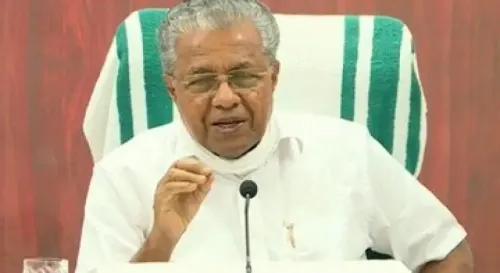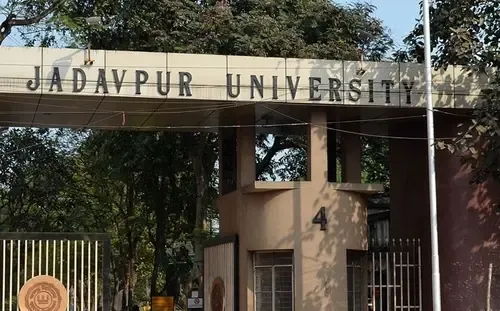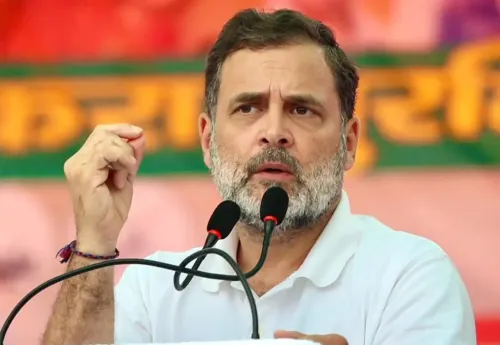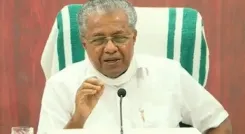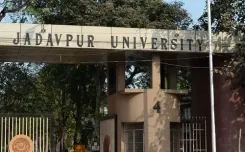Is India Emerging as a Global Leader in Artificial Intelligence?

Synopsis
Key Takeaways
- India is leading global AI initiatives.
- Upcoming summits will tackle real-world challenges.
- New rules enhance transparency and accountability.
- MeitY's regulations aim to curb AI misuse.
- Stronger cybersecurity measures are being implemented.
New Delhi, Oct 26 (NationPress) India is at the leading edge of efforts to ensure that Artificial Intelligence (AI) is transparent, focused on public benefit, and regulated by international standards. Serving as the Lead Chair of the Global Partnership on AI (GPAI), India hosted the Global India AI Summit in Delhi in July 2024, which highlighted essential aspects of the AI ecosystem, including Computer Capacity, Data Sets, Application Development, Start-Up Financing, and Safe and Trustworthy AI.
Looking ahead, India will facilitate the AI Impact Summit in Delhi in February next year with the central theme of ‘leveraging AI to tackle real-world issues’ such as health care, education, agriculture, climate change, and governance. Prime Minister Modi has shown a keen interest in fostering AI advancements, recognizing its transformative potential for humanity. His initiatives have positioned India prominently on the global digital landscape.
Meanwhile, India has taken proactive steps to combat the misuse of AI on social media, particularly against deepfakes, synthetic voice videos, and manipulated images, by tightening the IT Rules 2021. On October 21, the government published amendments to these rules, seeking public feedback within two weeks. This move is timely, given that perceived excessive governmental control over social media has triggered substantial protests among the youth in several neighboring countries.
The Ministry of Electronics and Information Technology (MeitY) stated in its official announcement that ‘with the increasing availability of generative AI tools and the subsequent rise of synthetically generated information (commonly referred to as deepfakes), the risks associated with such technologies in causing user harm, spreading misinformation, manipulating elections, or impersonating individuals have escalated significantly.’ MeitY added that these amendments were crafted after extensive public discussions and parliamentary deliberations.
The updated regulations require companies providing AI generation tools to incorporate visible watermarks or metadata identifiers on all synthetic content, covering at least 10 percent of the display area for images and videos. Similarly, audio content must include identifiers during the first 10 percent of playback. For the first time, the amendments define ‘synthetically generated information’ as content ‘artificially or algorithmically created, generated, modified, or altered using computer resources to appear authentic or true.’
Major social media intermediaries—large platforms categorized under the IT Rules—will be forbidden from allowing users to hide or eliminate these identifiers, making it more challenging to disguise the origin of AI-generated content. Platforms must also require users to declare if uploaded content is synthetically generated before publication and implement automated detection systems to confirm these declarations. These rules apply exclusively to publicly accessible content and not to private or unpublished materials.
Additionally, the government has classified all digital services that utilize mobile numbers—from WhatsApp and payment applications to food delivery services—under telecom cybersecurity regulations, empowering the relevant authorities to suspend user accounts across various services. The Telecommunications(Telecom Cyber Security) Amendment Rules announced on October 22 establish a government-operated mobile number verification (MNV) system and mandate database checks prior to the purchase or sale of used phones.
These measures aim to tackle the rise in cybercrime stemming from stolen or forged mobile connections. The MNV platform, a centerpiece of the new regulations, will validate whether the phone numbers provided by users correspond to legitimate telecom subscribers.
The government also aims to subject AI-generated content to the same due diligence and takedown obligations that apply to illegal online information. MeitY emphasizes that these regulations seek to promote user awareness, enhance traceability, and ensure accountability, while fostering an ‘enabling environment for innovation in AI-driven technologies.’ A new provision clarifies that platforms removing synthetic content through grievance redressal mechanisms will maintain their legal protections from liability for such content.
New procedural safeguards have been introduced in the content takedown rules, limiting authority to senior officials only. The rules restrict content removal powers to officials at the Joint Secretary rank and above as well as Deputy Inspector General or higher in the police force. Previously, even lower-ranking officials could send removal notifications. Now, all notifications must include specific legal grounds, statutory provisions, and detailed reasoning. A Secretary-level officer will review all orders monthly to ensure ‘necessity and proportionality.’ It is noteworthy that the social media platform X recently challenged the government, arguing that ‘thousands of officials were allowed to issue arbitrary orders without judicial oversight.’
The strengthening of online content removal regulations is an essential step, as it mandates serious consideration at senior levels before issuing orders to intermediaries. The orders must specify the legal basis and statutory provisions being invoked, the nature of the unlawful act, and the electronic location of the content. India has initiated this approach as concerns regarding the misuse of AI gain international attention. The European Union’s AI Act, set to take effect in 2026, mandates labeling for ‘synthetic audio, image, video, or text content.’ Meanwhile, China’s recent labeling measures have been even more stringent and detailed. India’s method seeks to tackle issues related to misinformation, false political narratives, and deepfakes without stifling innovation and creative expression.
A balance between regulatory penalties under the IT Act and the safe harbor provisions for intermediaries has been pursued by MeitY, marking a commendable step forward. India is leading the world in the adoption of AI applications, and MeitY’s timely initiative is pivotal for the country’s AI-driven economic growth. The newly established rules enhancing telecom cybersecurity are equally timely, ensuring compliance with data protection laws and curbing the widespread issue of data theft.
(The writer is a former Director of the Intelligence Bureau)

